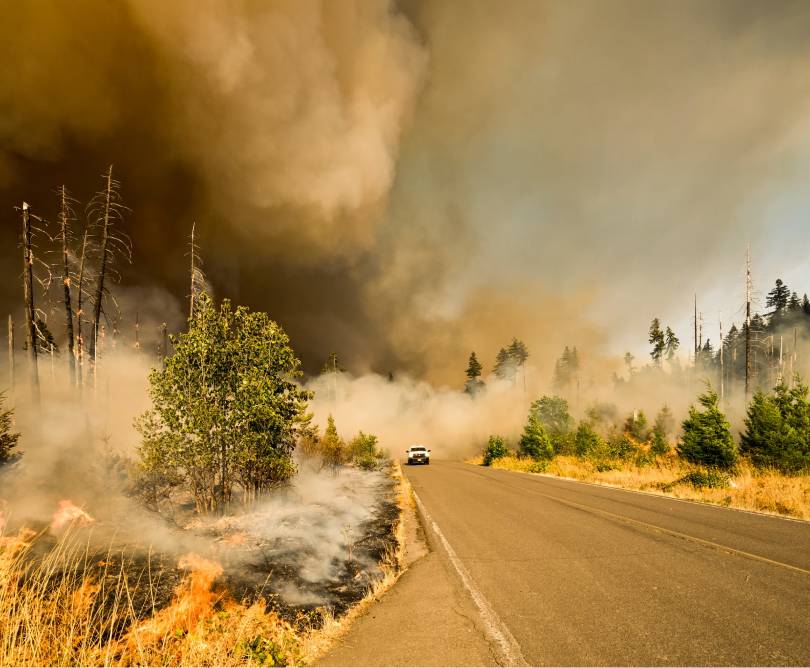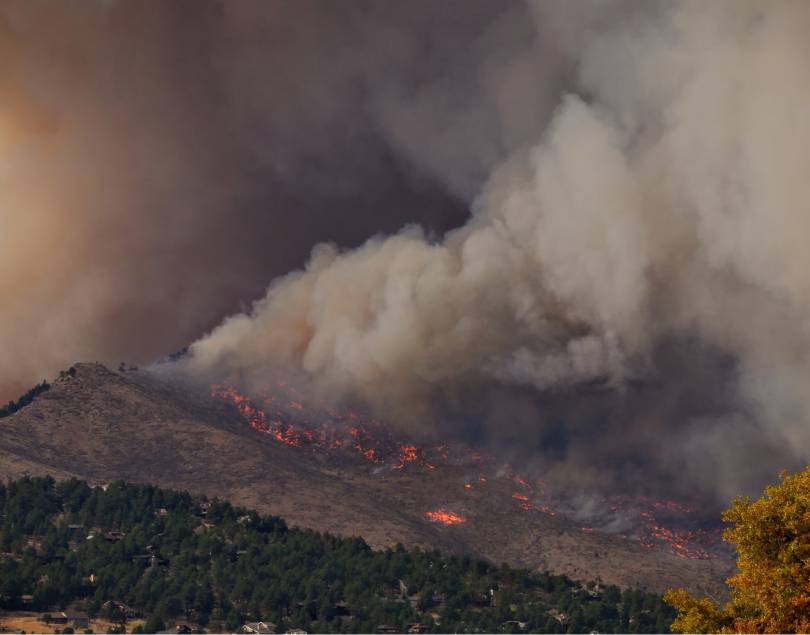Fire Emissions and their Atmospheric Aging
Fire Emissions and their Atmospheric Aging
Emissions from wildland fires and the transport and fate of emitted gases and particulate matter are important for understanding their impact on atmospheric, hydrological, and ecological processes, on human health and wellbeing, and on the environment, including climate change. Initial wildfire plume evolution is complex and poorly understood.


Upon emission, a wildfire plume undergoes dilution with surrounding air and cools, as well as photo-chemical aging. While midland long-distance plume aging has already been successfully investigated using manned aircraft, plume evolution measurements close to emissions are poorly studied. We will study near-fire plume aging using a set of conventional and UAS-based sensors, as well as modelling techniques. Near-fire emission measurements and modeling are key for understanding and quantification of their radiative forcing and health impacts of fire plumes, which depend on concentrations, chemical composition, and optical properties of emitted pollutants.
Our work will result in the following products and outcomes:
- Capacity for smoke plume characterization with UAS-based instruments and samplers;
- Improved emission factors (including physical, chemical, and toxicological properties) and their scaling with fire size as function of fuel and environmental conditions;
- Quantitative characterization of aging of emissions and their properties as function of fire size.
These products are essential for expanding our ability to predict radiative forcing and health risks from wildfire plumes as well as for predicting and mitigating effects of fires on human and natural systems.
The thematic goal of Fire Emissions and their Atmospheric Aging is to build currently lacking field and modeling capacity and experience for studying wildland fire emissions, integrating existing expertise in fire meteorology, remote sensing, and plume modeling.








 Acknowledgement: This material is based upon work supported by the National Science Foundation under Grant No. OIA- 2148788.
Acknowledgement: This material is based upon work supported by the National Science Foundation under Grant No. OIA- 2148788.